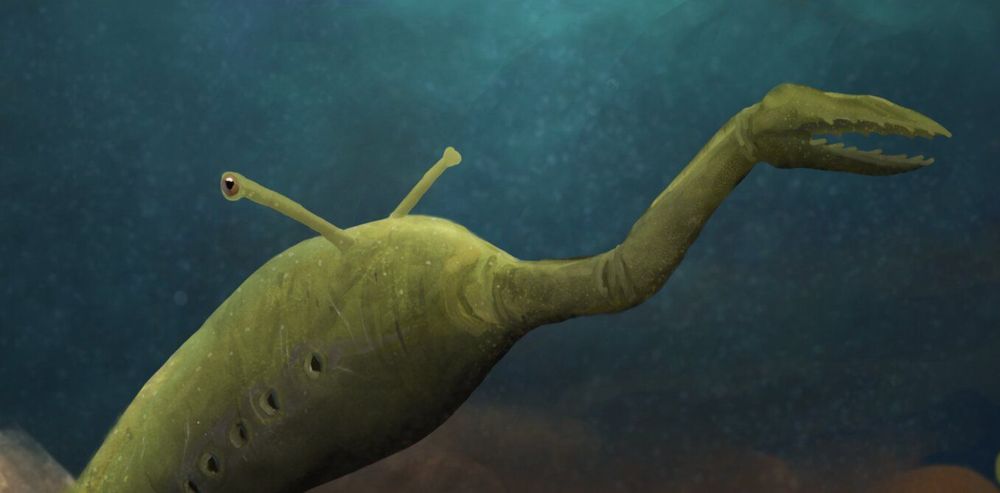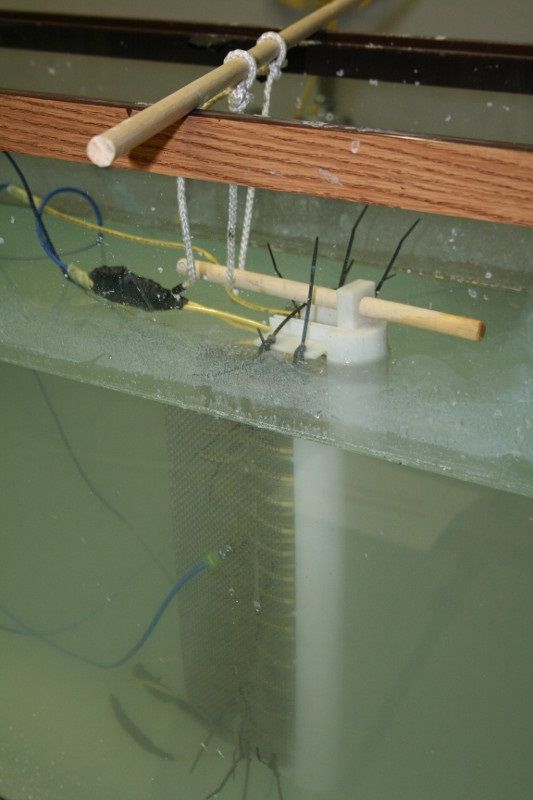Page 8223
Nov 11, 2019
The mysterious ‘Tully Monster’ fossil just got more mysterious
Posted by Genevieve Klien in category: futurism
Every now and again, scientists discover fossils that are so bizarre they defy classification, their body plans unlike any other living animals or plants. Tullimonstrum (also known as the Tully Monster), a 300m-year-old fossil discovered in the Mazon Creek fossil beds in Illinois, US, is one such creature.
At first glance, Tully looks superficially slug-like. But where you would expect its mouth to be, the creature has a long thin appendage ending in what looks like a pair of grasping claws. Then there are its eyes, which protrude outward from its body on stalks.
Tully is so strange that scientists have even been unable to agree on whether it is a vertebrate (with a backbone, like mammals, birds, reptiles and fish) or an invertebrate (without a backbone, like insects, crustaceans, octopuses and all other animals). In 2016, a group of scientists claimed to have solved the mystery of Tully, providing the strongest evidence yet that it was a vertebrate. But my colleagues and I have conducted a new study that calls this conclusion into question, meaning this monster is as mysterious as ever.
Nov 11, 2019
New fossil pushes back physical evidence of insect pollination to 99 million years ago
Posted by Quinn Sena in category: futurism
A new study co-led by researchers in the U.S. and China has pushed back the first-known physical evidence of insect flower pollination to 99 million years ago, during the mid-Cretaceous period.
The revelation is based upon a tumbling flower beetle with pollen on its legs discovered preserved in amber deep inside a mine in northern Myanmar. The fossil comes from the same amber deposit as the first ammonite discovered in amber, which was reported by the same research group earlier this year.
The report of the new fossil will publish Nov. 11 in the journal of the Proceedings of the National Academy of Sciences. The fossil, which contains both the beetle and pollen grains, pushes back the earliest documented instance of insect pollination to a time when pterodactyls still roamed the skies—or about 50 million years earlier than previously thought.
Nov 11, 2019
Kitty Hawk’s Extremely Quiet Flying Car Has a 100-Mile Range
Posted by Quinn Sena in category: transportation

It can reportedly cover the 55 miles between San Jose and San Francisco in just 15 minutes.
Nov 11, 2019
New Platform Aims To Help Protect Power Grid From Cyber Threats
Posted by Quinn Sena in category: cybercrime/malcode
Fortress Information Security and AEP launched the Asset to Vendor (A2V) Network to help electric utility providers collaborate for more effective cybersecurity.
“Multiple products are affected globally”
Google Cloud down. Issue global in scale. Numerous services affected, including Kubernetes and IoT services like Nest.
Google Cloud Platform (GCP) says it is experiencing a “major issue” with services including Cloud Dataflow, AppEngine, Compute Engine, Cloud Storage, Dataflow, Dataproc, Pub/Sub, BigQuery, Networking all failing today as of 9.14 am BST.
Nov 11, 2019
Quantum computing gets 10 billion qubits closer
Posted by Quinn Sena in categories: computing, particle physics, quantum physics
Oxford University researchers have, for the first time, generated a massive 10 billion entangled bits in silicon, taking an important step towards a real world quantum computer.
The researchers cooled a piece of phosphorus-doped silicon to within one degree of absolute zero and applied a magnetic field. This process lined up the spins of one electron per phosphorus atom. Then the scientists used carefully timed radio pulses to nudge the nuclei and electrons into an entangled state. Across the silicon crystal, this produced billions of entangled pairs.
Stephanie Simmons, researcher and lead author on the paper Entanglement in a solid-state spin ensemble — published in Nature, says that quantum computers really start to give classical computers a run for their money at a few dozen qubits, but her team is working to skip that stage altogether by going directly from a two-qubit system to one with 10 billion.
Nov 11, 2019
‘Water cloak’ uses electromagnetic waves to eliminate turbulence
Posted by Quinn Sena in categories: computing, materials
We could essentially control water at the coast lines with magnetism keeping it from eroding things.
Fuel-efficient ships that produce no wakes could soon be a reality thanks to computer simulations of “water cloaks” done by two researchers in the US. Yaroslav Urzhumov and Dean Culver of Duke University have shown that ions present in ocean water can be accelerated by electromagnetic waves in such a way that any turbulence created by sea-going vessels is cancelled out. Their work offers new opportunities for creating ships with greater propulsion efficiency – and could also be used to make vessels that are harder to detect.
“This cloaking idea opens a new dimension to create forces around an underwater vessel or object, which is absolutely required to achieve full wake cancellation,” says Urzhumov.
Continue reading “‘Water cloak’ uses electromagnetic waves to eliminate turbulence” »
Nov 11, 2019
A Satellite That Fires Fake Shooting Stars Is Ready to Launch
Posted by Quinn Sena in category: satellites
Burning Garbage
The satellite will launch centimeter-long pellets that will incinerate upon re-entering Earth’s atmosphere. From the ground, they’re expected to look similar to slow-moving shooting stars and will take anywhere from three to ten seconds to burn away, Space.com reports.
“With this launch, we are a step closer to realiz[ing] the man-made shooting star,” Astro Live Experiences CEO Lena Okajima said, per Space.com. “Please look forward to the world’s first demonstration we are aiming [for] in 2020, which will be a major milestone for ALE.”

















